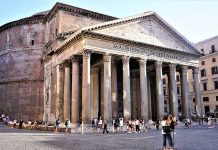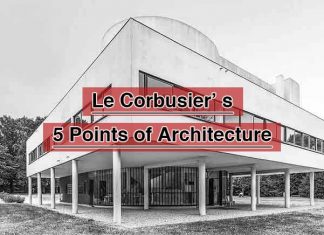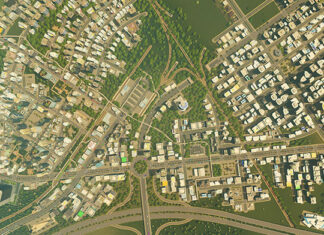| Architect: Icnitus and Callicrates |
| Location: Athens, Greece |
| Construction years: 447-432 BC |
| Structure material: Pentelic marble |
| Architectural style: Doric order |
Parthenon of Athens is one of the most important landmarks and iconic symbols of ancient Greece. Built in 447-432 BC, the Parthenon is a temple located on Acropolis in Athens, Greece. Its historical and architectural significance makes it an important structure for western history.
In this article, we’ll be exploring the architectural characteristics of the Parthenon Temple as well as its history and cultural importance. Additionally, we’ll provide visit information for this stunning ancient temple.
The Parthenon was dedicated to Goddess Athena. The reason why the Parthenon Temple is so important is that it’s the largest temple of both the Acropolis of Athens and classical Greek architecture. Moreover, it is one of the symbol structures that refer to the Democracy of Athens.
Let’s continue with the other facts about the Parthenon of Athens.
Parthenon Architecture Analysis

Parthenon Temple is the peak of the Doric order in ancient Greece. The architects of the temple are Icnitus and Callicrates, who are among the most renowned ancient Greek architects.
While the groundbreaking of the building dates to 447 BC, today’s Parthenon is not the first temple structure on this site.
When Persians enter Athens in 480 BC, they burned down the Athens and Acropolis Hill. Unfortunately, the first Temple of Parthenon on that hill was burnt as well. Afterward, a new temple was built in the same place and it’s still standing today.
The temple is located on the city-facing side of the hill. By this means, Parthenon Temple can be seen everywhere in the city of Athens. Furthermore, it establishes strong relationships with the nearby built environment.
The New Acropolis Museum of Athens is a perfect example of this contextual relationship. It exhibits artifacts that were found on the hill and includes a special gallery where visitors can behold Parthenon.
Design

As aforementioned, the architectural style of the temple is Doric order. Looking at the structure’s exterior, you can easily notice the Doric-style columns surrounding the Parthenon, making it an example of the peripteral temple style.
The architectural design of the building is the peak point of the Doric order according to most historians.
If we look at the front facade of the temple, we see that the outermost columns are closer to each other. Additionally, the Parthenon columns have entasis like most Doric columns. In other words, the middle of the column shafts is fatter and columns are getting thinner upwards.
This is only one of the optical illusions of Parthenon architecture. Thanks to these illusions a pillar appears taller than it is. According to Nicole Bridge, the Parthenon columns are so much tall that they become as thin as an ionic column towards the top (2015).
Another design subject is color. You know people generally think that all ancient temples have similar colors in gray and straw-yellow tones. However, architecture historians say that the original Parthenon in ancient Greece was colored red, blue and golden yellow. Today, there is not a trace of these colors.
As for the materials, the architects of the structure used limestones in the foundation part. Except for this foundation, the primary material of the Temple of Parthenon is Pentelic marble.
The Parthenon sculptor who sculpted all metopes and statues in the building is Phidias. His works were also made of marble.
Exterior
The temple has a triangle pediment on two symmetrical narrow sides of the roof. Before it was demolished, the pediment had displayed some sculptures made by Phidias.
Below, there is a section called entablature, which is the main part between the column heads and the roof (Triangle pediment). This entablature houses two sub-sections, the first is “frieze” and the other one is called “architrave”.
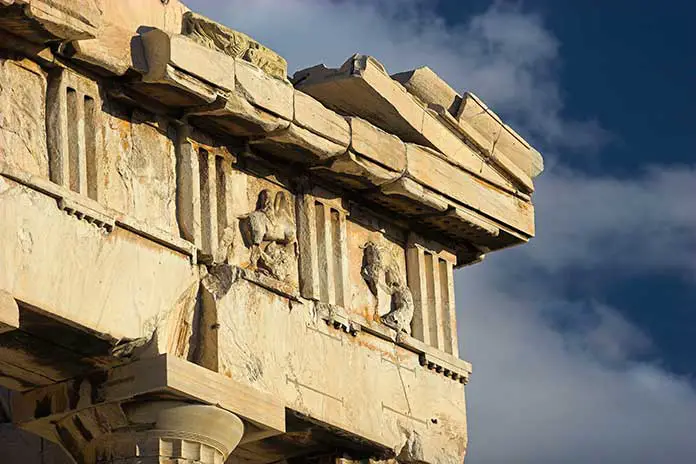
The upper section, frieze, is a row of metopes and triglyphs. While triglyphs are the fluted tablets on the frieze, metopes are the unadorned gaps between triglyphs.
Parthenon had 92 metopes witnessing the most magnificent sculpture workmanship of that period. These metopes narrate war stories between Greeks and Amazonians. They also tell the bitter struggles between Troians, gods and giants… Unfortunately, most of them didn’t reach today.
Floor Plan of the Parthenon

The floor plan of the Parthenon helps us to understand the design and column order of the structure.
According to this plan, the Parthenon of Athens had 46 outer and 23 inner columns. Each one is 20 fluted Doric columns. The outer columns are larger than the inners in diameter.
The base of the building had 23.000 square feet. Dimensions of the Parthenon are around 30,9 meters by 69,5 meters.
The ratio between the width and height of this building is quite the golden ratio. So much so that, Parthenon at Acropolis is among the first works in which people used the golden ratio.
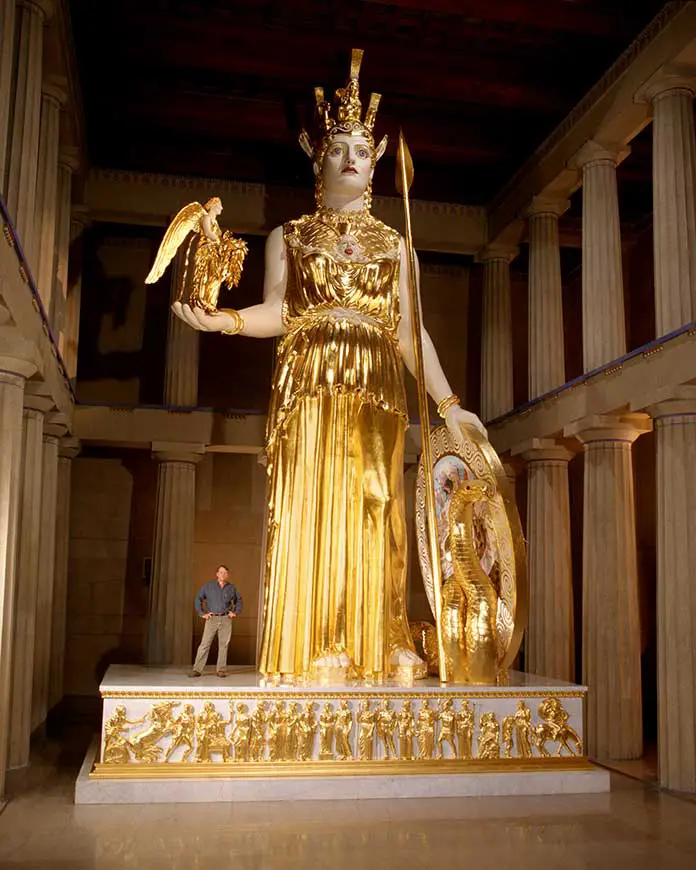
There are two rooms inside the Parthenon, one small and the other big. The big room that welcomes us when we enter from the pronaos is Cella. Columns in a single file surround this room.
In the Cella, there is an Athena sculpture with a height of 12 meters (39 feet). The sculptor of the Athena statue in the Parthenon is Phidias, just like other statues in the temple. He made the statue by carving wood and covering it with ivory and gold.
Historical Functions of the Parthenon of Athens

The Greek Parthenon temple was a sacred space that people see as a symbol of religious power, just like Hagia Sophia.
Originally, serving as a temple, the building was converted into a church in the 6th century. Because the Christian Byzantine Empire had conquered Greece and abolished pagan worship.
In the Ottoman Empire period (1456), Ottomans converted it into a mosque and added a minaret. Then, according to some historical sources, Turks used the Parthenon as an ammunition store in 1687.
When the Venetians fired the armory, the Parthenon frieze around the Cella wall got damaged seriously. Afterward, Venetians used the building as a church again when they have control of the Acropolis.
To transform its function into a church, they destroyed the minaret and added a bell tower. However, there is no trace of these add-ons in the structure of the Parthenon today.
Finally, Englishes have run sculptures and marble friezes of the Parthenon into British Museum in the 19th century. Some of the remaining sculptures are exhibited in the New Acropolis Museum, located near the Parthenon.
As a result of all these additions, changes and functional transforms, the Parthenon of ancient Greece is still standing. Moreover, the fact that it was worn out and damaged in the course of history did not reduce the importance of the building anyhow.
Visit Parthenon
If you want to visit the Parthenon, you can go to the Acropolis of Athens located in the heart of the city. There is Acropolis Ticket Office where you can buy a ticket for visiting this monument.
The southern entrance of the hill includes an elevator for wheelchair access. It is also possible to access the hill by walking.
We recommend you visit the nearby New Acropolis Museum as well. Additionally, for the people who are in the United States, there is a full-scale replica of the temple in Centennial Park in Nashville, USA.
Conclusion
In conclusion, the Parthenon of Athens is considered to be one of the most impressive and well-preserved examples of ancient Greek architecture. Located on Acropolis Hill, it is also the most famous example of Doric architecture.
We’ve provided a comprehensive overview of the architecture analysis, functions and key features of the Parthenon Temple.
Its elaborate design, including impressive Doric columns and intricate sculptures, demonstrates the creativity and skills of ancient Greek architects and craftsmen.
Overall, the Temple of Parthenon is an awe-inspiring structure that attracts visitors from all around the world. Its rich history and timeless beauty make it a must-see destination for anyone interested in the wonders of the ancient world.
FAQ
A: Yes, although not yet certain, Parthenon was built and used as a temple by ancient Greeks. However, some studies show that the structures served as the treasury of Athens in the earlier centuries.
A: Parthenon is located on Acropolis Hill in Athens, Greece.
A: Parthenon was built in 447-432 BC by the order of the famous Greek statesman Pericles.
A: Parthenon was originally built as a Greek temple or treasury, but later it served as a Byzantine church, a Roman Catholic cathedral, a mosque (1456), and an ammunition store (1687).
A: The Parthenon Temple is considered to be one of the most important examples of ancient Greek architecture and art. It is also a symbol of the birthplace of democracy and Western civilization.
A: Yes, visitors can buy tickets to visit Parthenon. However, before visitation, you should double-check if the restoration work is finished. Visitors can still view the exterior of the temple and explore the surrounding archaeological site.
A: Parthenon was destroyed by the Venetian doge Francesco Morosini in 1687 as a result of bombardments of the Acropolis against Ottomans.
A: The temple is made of Pentelic marble and limestone.
A: It had 46 outer columns and 23 inner columns in total.
A: It had a height of 13.72 m (45 ft).



